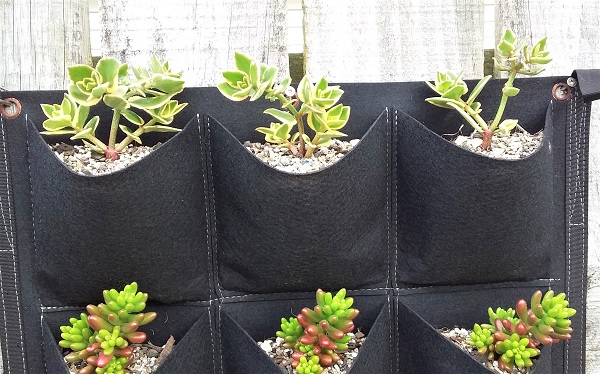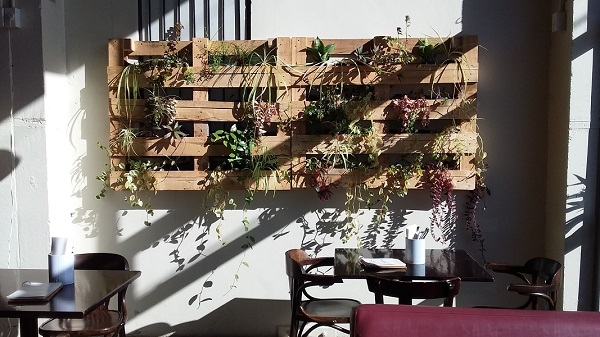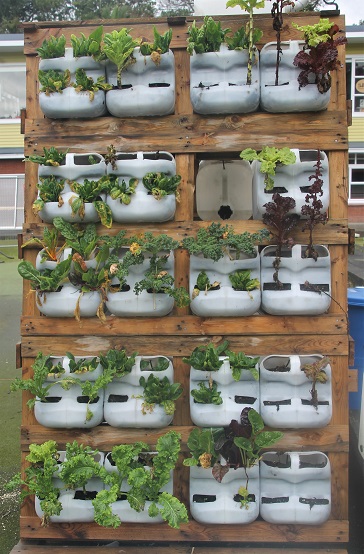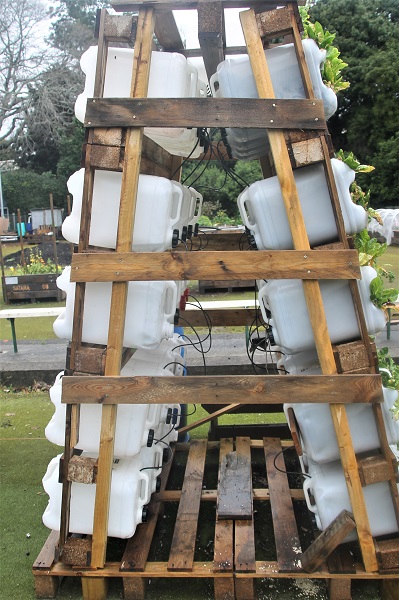Not all of us have access to limitless garden space, and even if we do, it can still be fun to go up in the world of growing. Try these fun vertical grow solutions, and green-up your world like never before!
Sew and grow
Yes, you can buy them, but why not get creative by sewing your own vertical grow bag panel from recycled materials. We suggest using leftover weed matting, or repurposing shelter cloth that has outlived its use. Begin by cutting and hemming an oblong of fabric which will act as the ‘back wall’ of your panel. (Make things easy for yourself by choosing a piece of fabric which will fit an existing space rather than looking for a hanging spot once you’ve completed your creation.) Next, cut strips of fabric deep enough to hold a planter, and twice the length of the width of your back wall. Starting at the top of the panel, stitch your first strip of fabric horizontally onto the back wall, pleating it at its base as you go to create one long pocket. Trim off any remaining fabric. Repeat to create rows of long pockets down the length of the back wall. Finally, divide your long pockets into several smaller ones by stitching from the bottom of the grow panel to the top.

When your grow bag panel is complete, attach loops of strong twine or wire to all 4 of its corners. Hang the grow bag panel to your chosen wall. While it’s possible to plant directly into the pockets, we recommend inserting already potted-up planters instead so that any plants which don’t thrive or which have finished flowering, can be easily replaced with fresh potted colour. Top the planters with fine gravel or stone chip to give a uniform appearance to the panel.
Repurposed Reinforcing Iron
Builder’s reinforcing iron has become as popular as wooden pellets for creating vertical grow spaces. To make your own green wall from this versatile material, simply attach a length of it to a wall (allowing a space of 2-3 centimetres between the iron and the wall) or hammer a metal waratah into the ground at each end of a length of reinforcing iron to create a free-standing vertical grow space. Plant your chosen potted colour, herbs or vegetables into planters through which a small hole has been drilled in each rim rim (if you want to get recycling, use cut-down plastic milk containers). Insert into each hole a double-ended hook made from number 8 wire (or use a butchers’-style hook), and hang your planters in rows along the reinforcing iron. Tip: use a quality potting mix so plants thrive in the modest root space available to them.

Perching Pallets
We spotted these low-cost vertical growing shelves in Wellington’s Newtown Trattoria Cafe on Constable Street. Yet another take on the ever-versatile wooden pallet, all you need to get the look is some excess timber to extend the height of the shelf-fronts, and short lengths of waste wood to screw in behind to create narrow shelves. This vertical grow space will accommodate smaller planters only so choose low-maintenance plants that will hold their own when the potting mix is on the dry side. We recommend succulents, especially of the trailing variety. Secure your vertical shelves to a wall that receives direct sunlight so that plants in this non-stepped shelving receive as much light as possible.

It’s pellets to the rescue for some really roomy self-supporting vertical growing spaces. You’ll need a supply of large plastic containers for this construction (ask a caterer to save some for you from their recycling bin), several pellets, and a handyman/woman. While the grow space pictured here was cleverly designed to redirect drainage water from one container to the next, you’ll have just as much success with a watering can. But remember, for safety’s sake, keep your construction to a manageable height – going up a step ladder with a can of water is not advised!










Join the Discussion
Type out your comment here:
You must be logged in to post a comment.